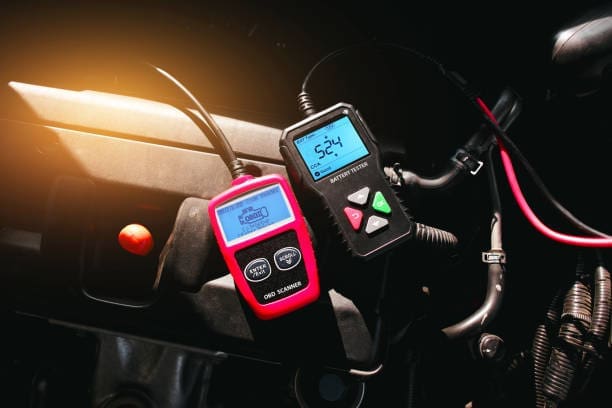Introduction
Table of Contents
ToggleComprehensive Guide to DTC Removal Service plays a crucial role in identifying issues within a vehicle’s engine, transmission, and other critical systems. While these codes are essential for diagnosing and repairing cars, there are scenarios where vehicle owners might consider removing or clearing DTCs. This comprehensive guide delves into the intricacies of DTC removal services, ensuring that such procedures are conducted safely and effectively to maintain vehicle performance and compliance.
Understanding Diagnostic Trouble Codes (DTCs)

What Are DTCs?
Diagnostic Trouble Codes are standardized codes used by automotive diagnostics tools to identify issues in a vehicle. When a vehicle’s onboard diagnostic system detects a problem, it triggers a DTC, which can be read using a diagnostic scanner. These codes are vital for mechanics to diagnose and repair faults accurately.
Types of DTCs
DTCs are categorized into several types based on their function and severity:
- P-Codes: Powertrain codes related to the engine and transmission.
- B-Codes: Body codes concerning the vehicle’s body and interior systems.
- C-Codes: Chassis codes related to the vehicle’s suspension and braking systems.
- U-Codes: Network codes involving communication issues between different modules.
Reasons for DTC Removal
1. Faulty or Inaccurate Codes
Sometimes, DTCs may persist due to faulty sensors or glitches in the vehicle’s diagnostic system. In such cases, removing or resetting these codes can be a temporary solution until the underlying problem is addressed.
2. Performance Enhancement
In certain performance tuning scenarios, enthusiasts might remove DTCs to bypass restrictions imposed by the vehicle’s standard settings. This is particularly common in motorsports or high-performance applications where factory settings might limit the vehicle’s potential.
3. Compliance with Regulations
Vehicles with emissions-related issues might trigger DTCs that can impact compliance with environmental regulations. Removing these codes may be a tactic used to temporarily bypass emission checks, though this approach is often illegal and unethical.
Risks and Considerations
1. Legal Implications
In many regions, tampering with emission-related codes or systems is illegal. Vehicle owners might face fines, penalties, or even the inability to pass mandatory emissions testing. It’s crucial to understand and comply with local regulations regarding DTC removal.
2. Vehicle Performance
Improper DTC removal can lead to unintended consequences such as degraded vehicle performance, reduced fuel efficiency, or even engine damage. A thorough understanding of the vehicle’s systems and the implications of code removal is essential to avoid such issues.
3. Warranty Concerns
Tampering with the vehicle’s diagnostic system may void warranties. Manufacturers and dealerships may refuse to cover repairs if they detect unauthorized modifications. It’s important to consider warranty implications before proceeding with DTC removal.
Safe and Effective DTC Removal Process
1. Diagnose the Root Cause
Before removing a DTC, it’s crucial to diagnose the underlying issue that triggered the code. This involves using diagnostic tools to pinpoint the exact problem. Addressing the root cause ensures that the DTC removal is not merely a temporary fix but a step towards a permanent solution.
2. Use Quality Diagnostic Tools
Utilize reputable diagnostic tools and software to read and clear DTCs. Professional-grade scanners provide accurate readings and help ensure that codes are not mistakenly removed or ignored.
3. Follow Manufacturer Guidelines
Adhere to manufacturer guidelines and procedures for DTC removal. Each vehicle brand and model may have specific protocols, and following these guidelines helps maintain vehicle integrity and performance.
4. Consult a Professional
For those unfamiliar with the intricacies of DTC removal, consulting a professional mechanic or technician is advisable. Experienced professionals can guide safe practices and ensure that the process is handled correctly.
Best Practices for DTC Management

1. Regular Maintenance
Routine vehicle maintenance helps prevent the occurrence of DTCs by ensuring that all systems are functioning correctly. Regularly scheduled inspections and servicing can address potential issues before they trigger trouble codes.
2. Keep Software Updated
Ensure that the vehicle’s onboard diagnostic software is up-to-date. Manufacturers periodically release updates that can improve diagnostic accuracy and address known issues, reducing the likelihood of unnecessary DTCs.
3. Educate Yourself
Understanding how your vehicle’s diagnostic system works and the significance of various DTCs can empower you to make informed decisions. Knowledge about your vehicle’s systems and diagnostics can help troubleshoot and ensure that any code removal is justified and safe.
Conclusion
DTC removal services can offer temporary solutions or performance enhancements, but they come with significant risks and considerations. It is essential to understand the role of Diagnostic Trouble Codes, the reasons for their removal, and the potential implications for making informed decisions. By following best practices and consulting professionals when necessary, vehicle owners can ensure that any DTC removal is executed safely and effectively, maintaining vehicle performance and compliance with regulations.



